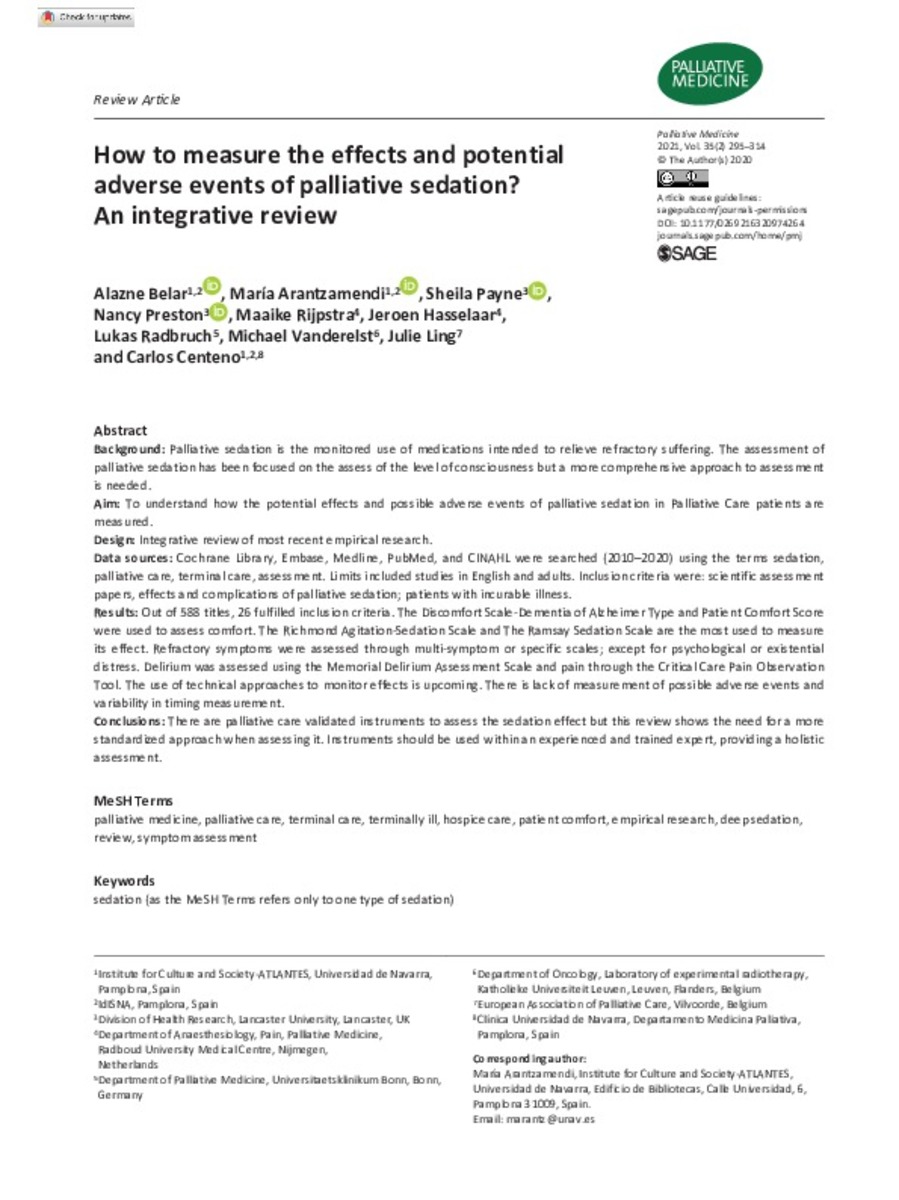How to measure the effects and potential adverse events of palliative sedation? An integrative review
Palabras clave :
Palliative medicine
Palliative care
Terminal care
Terminally ill
Hospice care
Patient comfort
Empirical research
Deep sedation
Symptom assessment sedation
Fecha de publicación :
2021
Nota editorial :
This article is distributed under the terms of the Creative Commons Attribution 4.0 License (https://creativecommons.org/licenses/by/4.0/) which permits any use, reproduction and distribution of the work without further permission provided the original work is attributed as specified on the SAGE and Open Access page (https://us.sagepub.com/en-us/nam/open-access-at-sage).
Cita:
Belar A, Arantzamendi M, Payne S, Preston N, Rijpstra M., Hasselaar J, et al. How to mesure the effects and potential adverse events of palliative sedation? An integrative review. Palliat Med. 2021;35(2):295-314
Aparece en las colecciones:
Estadísticas e impacto
0 citas en

0 citas en

Los ítems de Dadun están protegidos por copyright, con todos los derechos reservados, a menos que se indique lo contrario.











